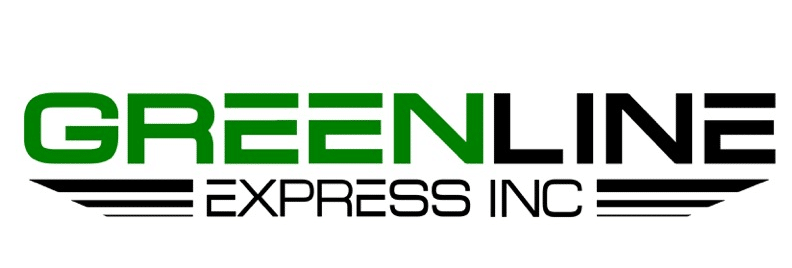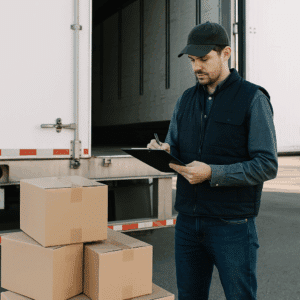Introduction: Why Cross-Docking Is the Hidden Power Move in Freight Logistics
When most people think about freight logistics, they imagine warehouses filled with pallets and boxes waiting to be moved. But what if you could eliminate the wait—and the warehouse? That’s exactly what cross-docking offers. It’s a high-efficiency freight strategy that bypasses long-term storage and keeps goods in motion, reducing delays, handling, and costs.
At GreenlineX, we’ve seen firsthand how cross-docking helps shippers streamline routes, respond faster to market demands, and even save money on refrigerated freight—all while improving on-time performance. Whether you’re managing retail freight, seasonal produce, or time-sensitive frozen shipments, cross-docking services could be your biggest operational unlock.
In this article, we’ll break down:
- What cross-docking actually looks like on the ground
- When it makes sense (and when it doesn’t)
- How it compares to traditional warehousing
- How to choose the right cross-docking warehouse
- Smart ways to integrate it into your LTL or TL strategy
Let’s start with the basics.
What Is Cross-Docking and How Does It Work?
Cross-docking is a freight logistics process where goods are unloaded from one inbound truck and quickly reloaded onto an outbound truck—without being stored for more than a few hours (or even minutes) in between. It’s a direct transfer, often done at a cross-docking warehouse or distribution center designed specifically for fast turnarounds.
Here’s a step-by-step example:
- Inbound shipment arrives at a cross-dock facility (usually a local or regional hub).
- Freight is sorted based on destination or priority.
- Outbound trucks are pre-positioned for fast loading.
- Goods are reloaded, often by the same crew, and the shipment is back on the road—sometimes in under 2 hours.
That’s a big difference from traditional warehousing, where products might sit for days or weeks. With cross-docking, your freight stays moving, your drivers stay on schedule, and your customers get what they need faster.
At GreenlineX’s Sacramento hub, our cross-docking terminal serves both refrigerated and dry freight, helping reduce spoilage risk and delay penalties. We’ve reworked everything from dock-to-dock shipping to mid-route transfers for drivers dealing with schedule conflicts or overweight issues.
Cross-docking is also commonly used in:
- Retail replenishment for high-turnover items
- Food and beverage logistics (where freshness matters)
- E-commerce with fast-delivery expectations
- Overweight or misrouted TL shipments that need rework
When Cross-Docking Makes the Most Sense for Shippers
Cross-docking is a logistics advantage—but it’s not always the right move. To decide if it’s right for you, here are the core scenarios where it shines:
1. You Have Just-in-Time Delivery Needs
If your customers expect daily or weekly restocks (think grocery stores, fast food chains, or florists), cross-docking helps you stay lean without risking stockouts. It avoids the delay of warehouse intake and outbound scheduling.
2. Your Freight Is Perishable, Fragile, or Time-Sensitive
Cross-docking is especially valuable for refrigerated LTL, frozen freight, or high-value electronics that need to stay in motion and avoid unnecessary touches. A good cross-dock facility has climate control, overnight staffing, and smart routing tech to help reduce handling time and product damage.
3. You’re Facing Storage Constraints or Overweight Loads
Warehouses come with high fees—especially in places like California. Cross-docking gives you more flexibility without the long-term commitment. You can also reconfigure pallets or swap trailers mid-transit to fix overweight issues. This is something we handle often at our GreenlineX cross-docking warehouse in Sacramento.
4. You Want to Improve Multi-Stop or Route Consolidation
If you’re shipping multiple partial loads to nearby destinations, cross-docking allows you to consolidate them efficiently. It’s ideal for LTL carriers looking to merge compatible loads or retailers fulfilling multiple orders in one zone.
Want to see how cross-docking helped lower reefer freight costs for a regional shipper? Read our detailed blog here.
Cross-Docking vs. Traditional Warehousing: What’s the Real Cost Difference?
One of the most common questions we hear is: “Is cross-docking really more cost-effective than standard warehousing?” The short answer: Yes—when used correctly.
Let’s break it down with a realistic scenario:
- Traditional Warehouse
You send freight to a 3PL warehouse. It sits there for a few days. You pay storage fees, handling fees, appointment setting costs, and risk delays if the warehouse is backed up. - Cross-Docking Facility
Freight is in and out in under a day. No storage. No excess handling. Appointments are streamlined and integrated into the TMS.
In a typical refrigerated freight scenario, that can mean saving $75–$200 per shipment, especially for high-frequency or LTL movements. Even dry goods benefit—less time sitting = fewer delays, fewer labor costs, fewer lost pallets.
If you’re shipping California to Midwest, where warehouse pricing and labor constraints can eat into margins, cross-docking is one of the few strategies that offers operational efficiency without sacrificing reliability.
To learn more about the federal logistics standards that apply to freight handling and transfer zones, check out transportation.gov.
What to Look For in a Cross-Docking Partner
Choosing the right cross-docking provider isn’t just about rates. It’s about reliability, communication, and flexibility.
Here are five critical capabilities to look for:
1. Asset-Based Operations
They should own or directly manage the trucks and cross-dock facility. This gives you more control, fewer handoffs, and faster resolution when issues arise.
2. Real-Time Visibility Tools
Make sure they use a robust Transportation Management System (TMS) with live updates, proof of delivery tracking, and integrations for appointments.
3. Overweight & Damage Rework
Sometimes freight needs to be adjusted before it can keep moving—due to weight limits, packaging shifts, or retailer delivery requirements. Your provider should have the team and tools to solve those problems onsite.
4. Cold Chain Compliance (If Needed)
For refrigerated loads, ask about temperature monitoring, dock door airflow, and night/weekend access.
5. Customer Communication
This is where the best providers stand out. At GreenlineX, for example, we provide immediate status updates, PODs, and support for urgent redelivery or route reoptimization requests. Your cross-docking partner should feel like an extension of your team.
Dock-to-Dock Efficiency: When Seconds Matter
“Dock-to-dock shipping” might sound simple—but it can save hours, especially when you’re working within tight delivery windows or retail appointment schedules.
For example, our Sacramento hub is designed to handle quick-turn LTL and TL movements. A driver can drop a pallet, get a reloaded trailer, and be on the road in under 45 minutes—versus a 2+ hour delay at most storage-heavy 3PLs.
That speed doesn’t just feel better. It actually improves:
- On-time percentage
- Detention avoidance
- Driver productivity
- Customer satisfaction
When you multiply that across your shipping calendar, cross-docking becomes a strategic advantage—not just a quick fix.
Conclusion: Cross-Docking Makes Freight Smarter, Not Harder
If you’re shipping regularly across the West Coast or from California to the Midwest, and you’re tired of paying for storage you don’t need, cross-docking is worth a serious look. Done right, it shortens delivery times, lowers overhead, and keeps freight flowing—even when your customers or production timelines are shifting.
Whether you need full-service cross-docking, dry LTL optimization, or regional distribution support, we’re ready to help.
Visit GreenlineX.net to learn more about our cross-docking solutions, reefer and dry freight capabilities, and how we can tailor logistics to your business.



